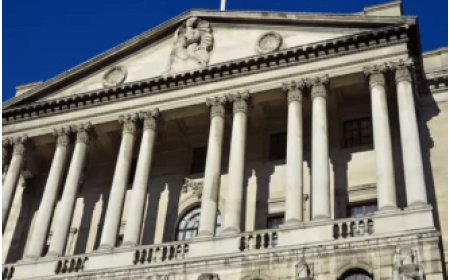Rachel Reeves Unveils Bold Economic Roadmap: Spring Statement to Tackle Growth, Public Finances & Cost of Living
Rachel Reeves Unveils Bold Economic Roadmap: Spring Statement to Tackle Growth, Public Finances & Cost of Living

Chancellor Rachel Reeves is preparing to deliver the much-anticipated Spring Statement on March 26, a key fiscal event that will outline the government’s approach to managing public finances, stimulating economic growth, and addressing the ongoing cost of living crisis.
This statement is expected to provide crucial insights into the economic direction the government will take, particularly in response to financial pressures and geopolitical uncertainties. As households and businesses brace for potential policy shifts, Reeves is expected to introduce measures aimed at balancing the books while ensuring sustainable economic expansion.
One of the most significant aspects of the Spring Statement will be proposed cuts to welfare spending. With public debt at elevated levels and the government seeking to reallocate resources, reductions in certain welfare programs could be on the horizon. The anticipated cuts are aimed at freeing up funds for increased defense spending, a move that reflects the current geopolitical climate and the government’s commitment to strengthening national security. While defense advocates support the shift, concerns are mounting over the impact of welfare reductions on vulnerable populations. Analysts suggest that Reeves will need to strike a delicate balance between fiscal responsibility and social support to maintain public confidence.
The cost of living crisis remains a pressing issue, with inflationary pressures continuing to weigh on households. Although inflation has shown signs of easing, many families still struggle with high energy bills, food prices, and housing costs. To address these concerns, Reeves may introduce targeted relief measures, such as energy bill support extensions or adjustments to income tax thresholds. However, with the government’s focus on fiscal discipline, any new support measures are likely to be carefully calibrated to avoid exacerbating budget deficits.
Another area of speculation is tax reform, particularly in relation to inheritance tax and Individual Savings Accounts (ISAs). The government is reportedly considering adjustments to inheritance tax, which has long been a contentious issue among taxpayers. Potential reforms could involve raising the tax-free threshold or introducing new exemptions to reduce the tax burden on families passing down wealth. Such changes could prove politically advantageous, particularly as the government seeks to appeal to middle-class voters ahead of future elections.
Reforms to ISAs are also being discussed, with the aim of encouraging greater savings and investment. Adjustments to contribution limits or tax incentives could be introduced to make ISAs more attractive, potentially boosting individual financial resilience. With economic uncertainty still a concern, policymakers may view savings incentives as a tool to promote financial stability among households.
Economic growth remains a key priority, and the Spring Statement is expected to outline measures designed to stimulate investment, job creation, and productivity. Business leaders are particularly keen to see policies that support innovation, infrastructure development, and skills training. The government has previously signaled interest in expanding investment incentives, and Reeves may introduce targeted tax breaks or funding initiatives to encourage corporate spending in high-growth sectors such as green energy and technology.
Public sector workers and unions will also be watching closely, particularly regarding pay policies and funding allocations for essential services. While the government has faced pressure to increase wages for healthcare workers, teachers, and other public servants, tight fiscal constraints may limit the scope for generous pay rises. Instead, Reeves may focus on efficiency improvements and restructuring measures to optimize public sector spending.
The upcoming statement will also provide updated economic forecasts, giving insight into the government’s expectations for growth, inflation, and employment. These projections will be crucial in shaping policy decisions and guiding market expectations. If the outlook remains uncertain, Reeves may emphasize the importance of prudent fiscal management while leaving room for future policy adjustments as economic conditions evolve.
The political ramifications of the Spring Statement are significant, as it will set the tone for the government’s economic strategy in the coming months. With opposition parties likely to scrutinize and challenge key policy announcements, Reeves will need to present a compelling vision that reassures businesses, households, and investors. Striking a balance between fiscal responsibility and economic support will be critical to maintaining public trust and positioning the government as a competent steward of the economy.
As March 26 approaches, anticipation is building over the specific measures Reeves will unveil. While tough decisions lie ahead, the Spring Statement represents an opportunity for the government to outline a clear and strategic economic path. Whether through welfare reforms, tax changes, or investment incentives, the policies announced will shape the UK’s financial landscape for the foreseeable future.
What's Your Reaction?
 Like
0
Like
0
 Dislike
0
Dislike
0
 Love
0
Love
0
 Funny
0
Funny
0
 Angry
0
Angry
0
 Sad
0
Sad
0
 Wow
0
Wow
0














































